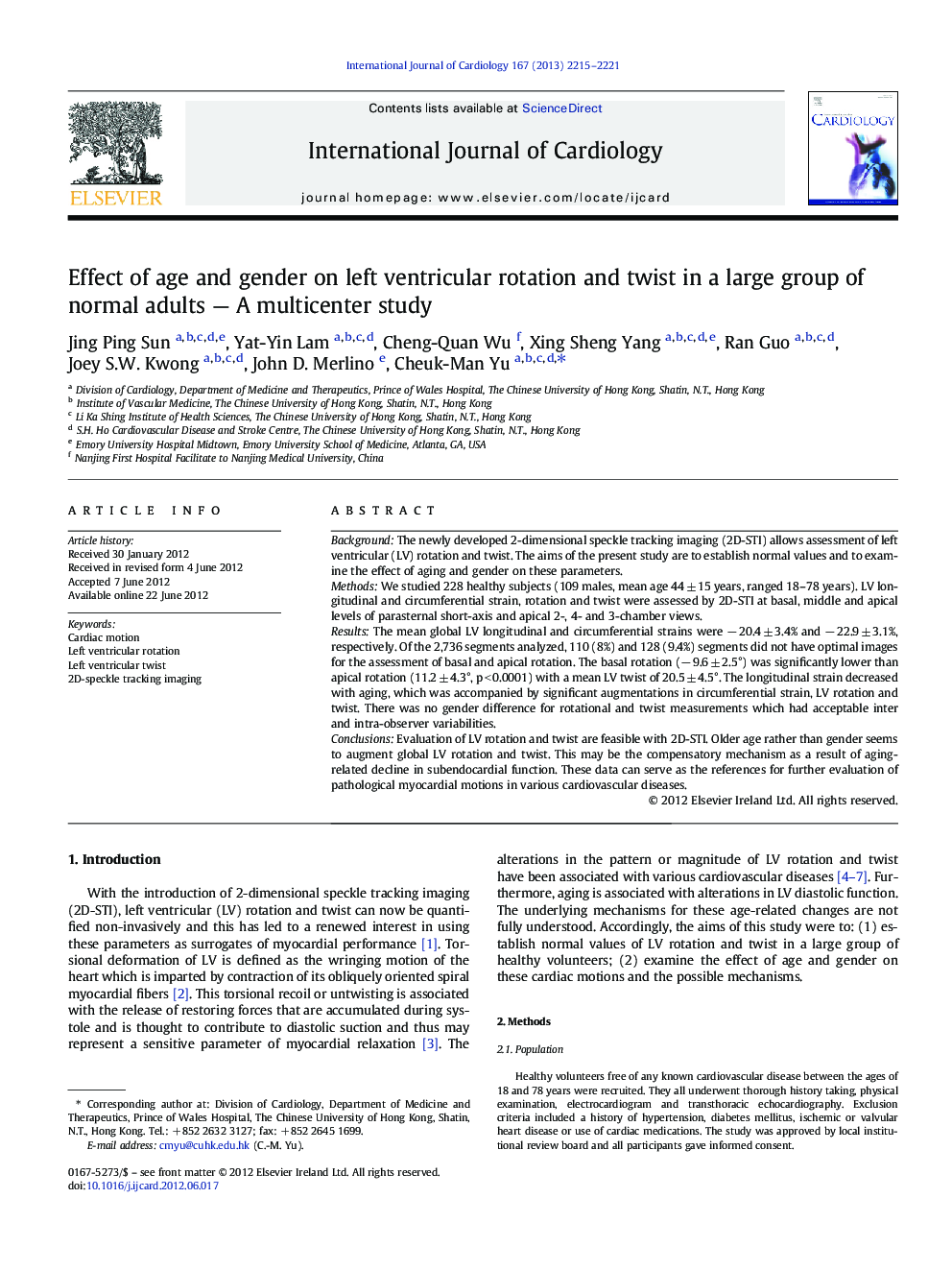| Article ID | Journal | Published Year | Pages | File Type |
|---|---|---|---|---|
| 5977301 | International Journal of Cardiology | 2013 | 7 Pages |
BackgroundThe newly developed 2-dimensional speckle tracking imaging (2D-STI) allows assessment of left ventricular (LV) rotation and twist. The aims of the present study are to establish normal values and to examine the effect of aging and gender on these parameters.MethodsWe studied 228 healthy subjects (109 males, mean age 44 ± 15 years, ranged 18-78 years). LV longitudinal and circumferential strain, rotation and twist were assessed by 2D-STI at basal, middle and apical levels of parasternal short-axis and apical 2-, 4- and 3-chamber views.ResultsThe mean global LV longitudinal and circumferential strains were â 20.4 ± 3.4% and â 22.9 ± 3.1%, respectively. Of the 2,736 segments analyzed, 110 (8%) and 128 (9.4%) segments did not have optimal images for the assessment of basal and apical rotation. The basal rotation (â 9.6 ± 2.5°) was significantly lower than apical rotation (11.2 ± 4.3°, p < 0.0001) with a mean LV twist of 20.5 ± 4.5°. The longitudinal strain decreased with aging, which was accompanied by significant augmentations in circumferential strain, LV rotation and twist. There was no gender difference for rotational and twist measurements which had acceptable inter and intra-observer variabilities.ConclusionsEvaluation of LV rotation and twist are feasible with 2D-STI. Older age rather than gender seems to augment global LV rotation and twist. This may be the compensatory mechanism as a result of aging-related decline in subendocardial function. These data can serve as the references for further evaluation of pathological myocardial motions in various cardiovascular diseases.
